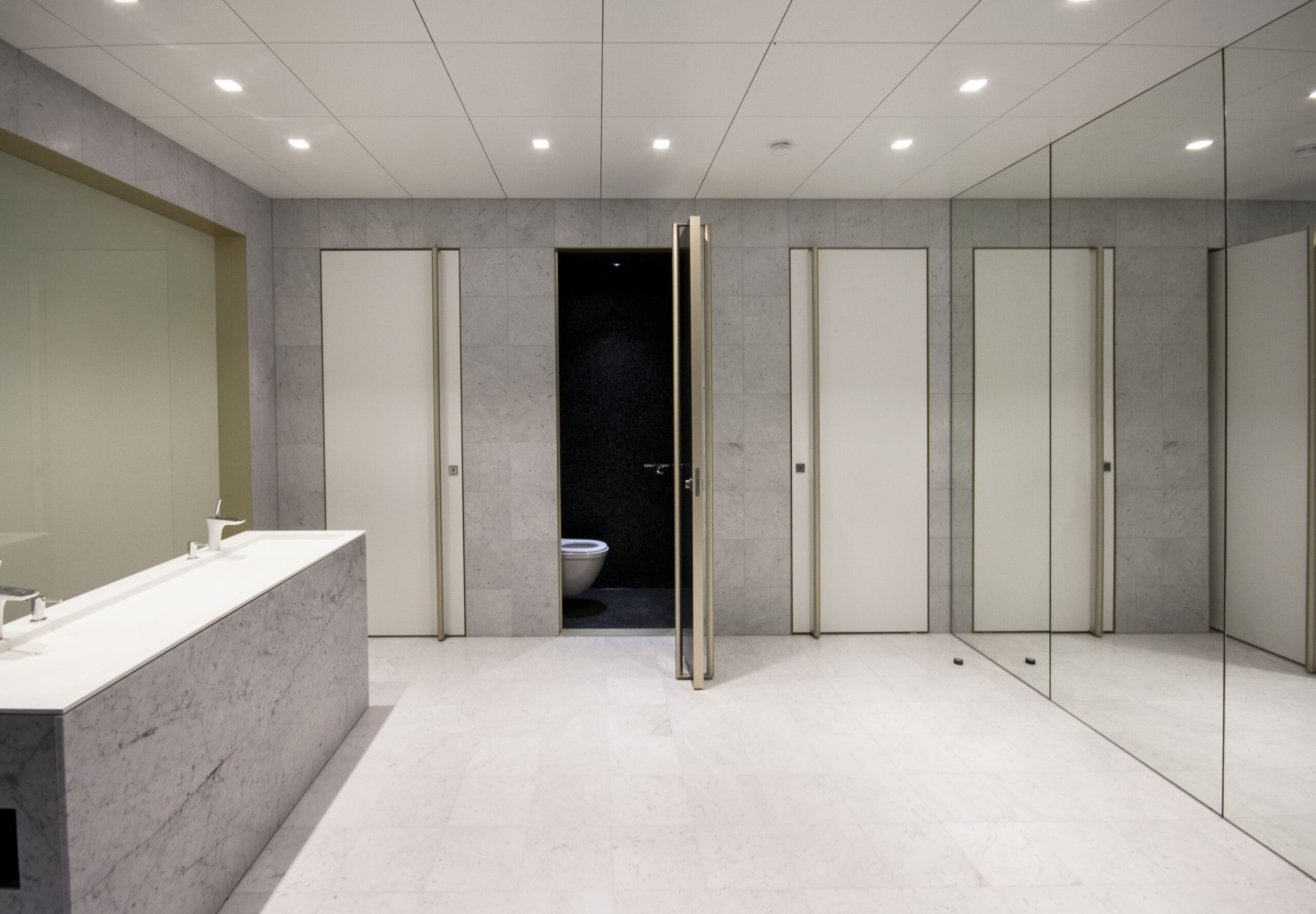
14 Feb Common Mistakes to Avoid When Specifying Pivot Hinges
The use of pivot hinges continue to grow in popularity for modern architecture and interior design due to their seamless functionality, aesthetic appeal, and ability to support large doors.
However, specifying pivot hinges requires careful consideration to avoid common mistakes that could lead to operational issues, safety hazards, and unnecessary costs. In this guide, we’ll highlight the most frequent errors architects, designers, and builders make when specifying pivot hinges and how to prevent them.
1. Choosing the Wrong Pivot Hinge for the Door Weight and Size
One of the most critical mistakes is selecting a pivot hinge that cannot support the weight and dimensions of the door. Pivot hinges come in various load capacities, and exceeding their weight limit can lead to sagging, misalignment, and mechanical failure.
How to Avoid This Mistake:
- Check the weight rating of the pivot hinge before specification.
- For large or heavy doors, opt for heavy-duty pivot hinges like the FritsJurgens System M+, designed to handle doors up to 500 kg.
- Consider door height and width to ensure smooth operation and stability.
2. Ignoring the Door Material and Structure
The material of the door affects the choice of pivot hinge. Solid timber, glass, metal, and composite doors each require different pivot systems, and using the wrong hinge can compromise durability and performance.
How to Avoid This Mistake:
- Specify hinges compatible with the door material.
- For glass doors, use a system like the FritsJurgens System One that integrates well with frameless designs.
- Ensure the door core is strong enough to accommodate the hinge system.
3. Incorrect Placement of the Pivot Point
The position of the pivot point impacts the door’s balance, movement, and accessibility. A common mistake is placing the pivot too close to the edge, which reduces stability and makes the door harder to operate.
How to Avoid This Mistake:
- Standard pivot placement is usually 150mm to 300mm from the door edge.
- For a dramatic effect, consider a central pivot point to create a revolving door-like movement.
- Use the FritsJurgens System 3 for centrally pivoted applications.
4. Overlooking Floor and Ceiling Conditions
Pivot hinges require suitable mounting surfaces. Weak subfloors, uneven ceilings, or insufficient anchoring points can lead to installation failures.
How to Avoid This Mistake:
- Ensure floors and ceilings can support the hinge system.
- For installations where floor drilling is not an option, consider top-mounted pivot systems like the FritsJurgens System M, which doesn’t require a floor spring.
- Verify ceiling reinforcement if using a top-mounted pivot.
5. Ignoring Fire and Safety Regulations
Non-compliance with fire safety regulations can lead to legal issues, building code violations, and potential hazards. Fire-rated doors often have specific hinge requirements.
How to Avoid This Mistake:
- Check local building codes and fire safety regulations.
- Use fire-rated pivot hinges when required.
- Consult a specialist or supplier to ensure compliance with safety standards.
6. Failing to Consider Door Swing and Clearance
Not accounting for the door’s swing radius and clearance can lead to obstructions, inefficient use of space, and accessibility problems.
How to Avoid This Mistake:
- Plan the door swing carefully, especially in small spaces.
- Allow enough clearance for the door to open fully without hitting walls or furniture.
- Use pivot hinges with hold-open or soft-close features for controlled movement.
7. Using Low-Quality or Incompatible Hardware
Pairing a high-end pivot hinge with poor-quality door hardware (such as handles and locks) can lead to functionality issues and design inconsistencies.
How to Avoid This Mistake:
- Invest in premium-quality hardware that complements the hinge system.
- Ensure locks, handles, and latches are designed for pivot doors.
- Check for compatibility between hardware finishes and materials.
8. Inadequate Maintenance Planning
While pivot hinges require minimal maintenance, neglecting periodic checks can lead to wear and tear, affecting door performance over time.
How to Avoid This Mistake:
- Schedule regular inspections and lubrication of moving parts.
- Use high-quality pivot systems like FritsJurgens that are designed for longevity with minimal upkeep.
- Educate clients on proper care to extend the lifespan of their pivot doors.
9. Not Consulting with a Pivot Hinge Specialist
Many architects and designers specify pivot hinges without consulting experts, leading to costly mistakes during installation and operation.
How to Avoid This Mistake:
- Work with pivot hinge specialists to ensure proper selection and installation.
- Reach out to Bellevue Architectural for expert advice and tailored solutions.
- Request technical drawings and specifications before finalising your choice.
10. Overlooking Aesthetics and Design Intent
Pivot hinges offer sleek, modern aesthetics, but the wrong hinge system or improper installation can compromise the design vision.
How to Avoid This Mistake:
- Choose concealed pivot hinges for a seamless look.
- Consider the door’s movement and how it enhances the overall design.
- Use premium pivot systems like the FritsJurgens System M for both functionality and aesthetics.
Need Expert Advice on Pivot Hinges?
Specifying pivot hinges requires careful planning to ensure durability, functionality, and compliance with design and safety standards. By avoiding these common mistakes, architects and designers can achieve seamless installations that enhance both residential and commercial projects.
At Bellevue Architectural, we provide premium pivot hinge solutions and expert guidance for architects, designers, and builders. Contact us today to discuss your project requirements and find the perfect pivot hinge system for your needs!

